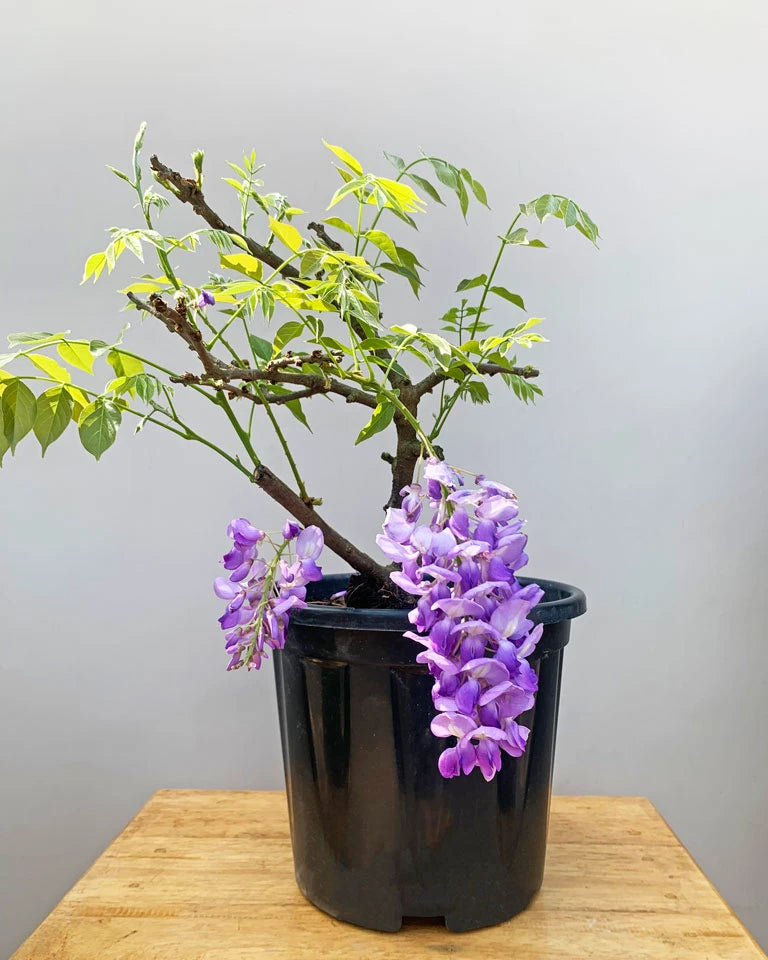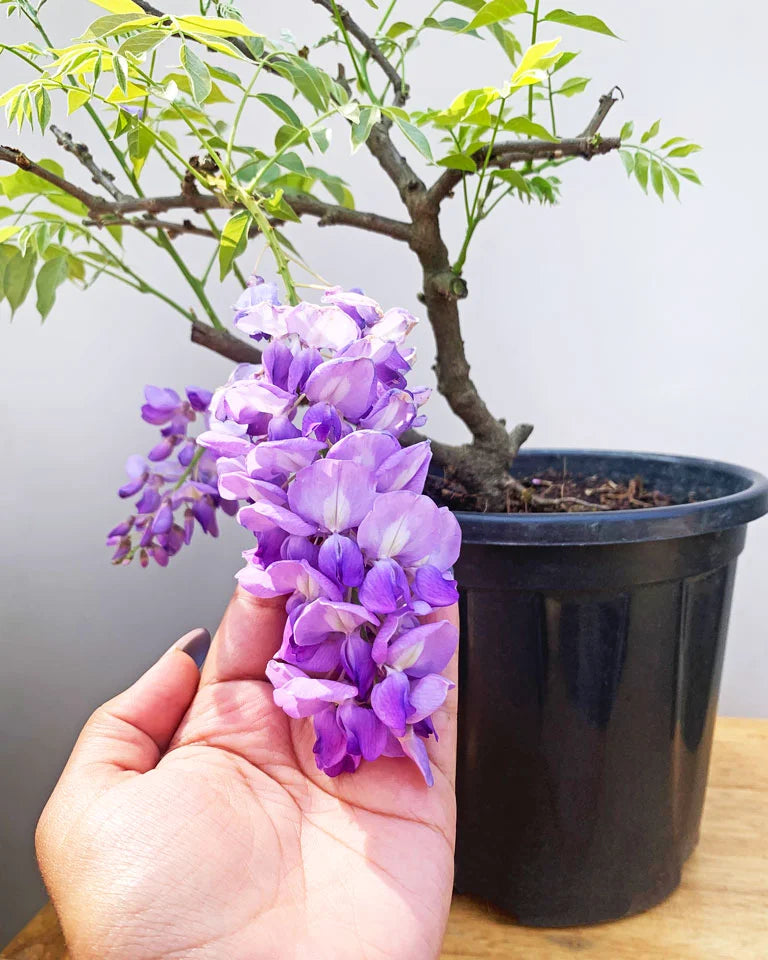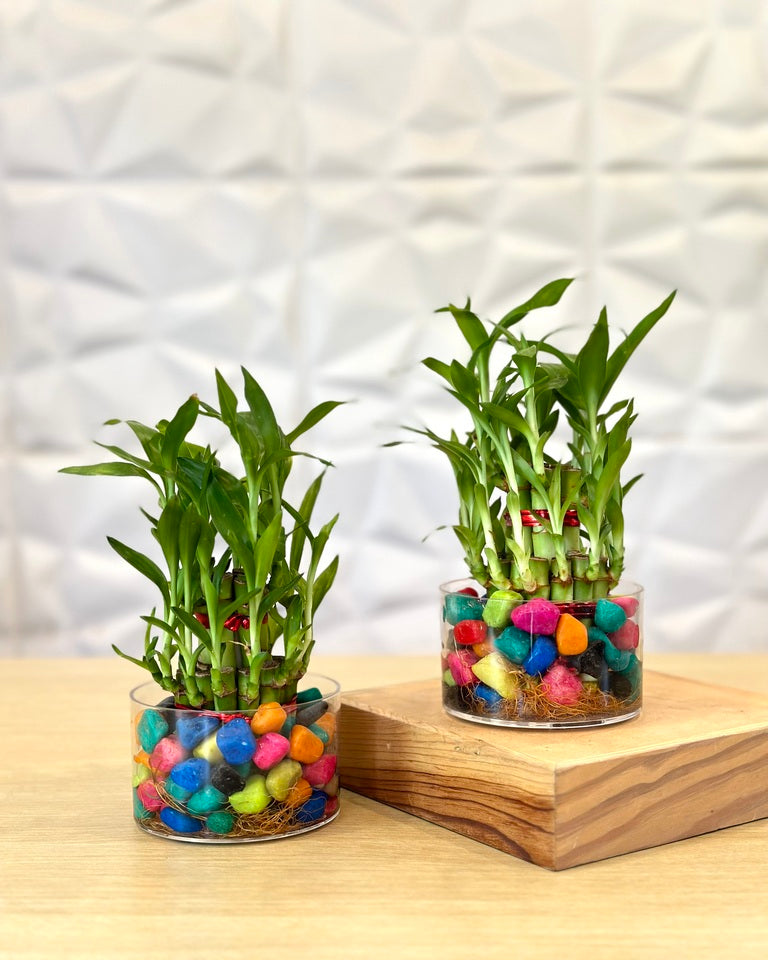
How to Care for Lucky Bamboo: A Guide for Beginners

Introduction
Lucky Bamboo (Dracaena sanderiana) is a beloved indoor plant, often associated with good fortune, prosperity, and positive energy. Despite its name, it is not a true bamboo but belongs to the Dracaena family. Its resilience and ability to thrive in water and soil make it a preferred choice for homes and offices worldwide.
Fascinating Facts About Lucky Bamboo
Lucky Bamboo has been a part of Feng Shui practices for centuries. It is believed to attract happiness, wealth, and longevity, making it a perfect gift for various occasions. The arrangement of stalks holds different meanings; for example, two stalks symbolize love, while three bring happiness, wealth, and long life. Additionally, Lucky Bamboo is a natural air purifier, improving indoor air quality by filtering toxins.
Caring for this plant is easy, but a few essential steps must be followed to keep it thriving. Let's explore the best practices for Lucky Bamboo care to ensure its longevity and lush green appearance.
The Ultimate Lucky Bamboo Care Guide
Providing the Right Light
Lucky Bamboo thrives in bright, indirect sunlight. Direct sunlight can cause the leaves to scorch, turning them yellow or brown. Placing the plant near a north or east-facing window is ideal, where it receives gentle morning light without exposure to harsh afternoon sun. If grown in low-light conditions, it may still survive but could grow more slowly and appear less vibrant.
If natural light is insufficient, artificial grow lights can supplement the plant's lighting needs. However, be cautious when placing the plant under direct fluorescent or LED lights for prolonged periods, as this can impact its health.

Watering the Right Way
One of the most crucial aspects of Lucky Bamboo care is choosing the right water. Tap water often contains chlorine and fluoride, which can harm the plant. It is highly recommended to use filtered, distilled, or rainwater. If tap water is the only option, let it sit for 24 hours to allow harmful chemicals to evaporate before using it for watering.
Caring for Lucky Bamboo in Water
Lucky Bamboo is frequently grown in water, which gives it a stunning aesthetic appeal. To maintain its health:
-
Use a transparent vase so you can monitor water levels.
-
Change the water every 7-10 days to prevent bacterial and algae buildup.
-
Ensure the roots are fully submerged, but do not overfill the container.
-
Add pebbles or stones for support, as this helps the plant stand upright and promotes stability.
Caring for Lucky Bamboo in Soil
While Lucky Bamboo can thrive in water, it also does well in soil. If planted in soil:
-
Use a well-draining potting mix with good moisture retention.
-
Keep the soil consistently moist but not soggy.
-
Water when the top inch of soil feels dry.
-
Ensure the pot has drainage holes to prevent waterlogging, which can lead to root rot.
Maintaining Optimal Temperature and Humidity
Lucky Bamboo prefers warm, humid environments, ideally with temperatures ranging from 18-30°C. It should be kept away from cold drafts, air conditioning vents, or direct heat sources like radiators. Misting the leaves occasionally helps maintain humidity levels, especially in dry indoor conditions.
Fertilizing for Healthy Growth
Lucky Bamboo is a slow-growing plant that doesn’t require excessive fertilization. However, occasional feeding can promote lush growth.
-
For water-grown Lucky Bamboo, use a diluted liquid fertilizer once a month.
-
For soil-grown plants, a balanced houseplant fertilizer every 2-3 months is sufficient.
-
Over-fertilization should be avoided, as it can cause yellowing leaves and weakened stalks.
Pruning and Maintenance
Regular maintenance is essential to keep your Lucky Bamboo healthy and attractive. Prune overgrown or yellow leaves with sterilized scissors to maintain their shape. If the plant becomes too tall, cut the stalk just above a node, and new shoots will emerge from the cut area. Rotating the plant periodically ensures uniform growth and prevents it from leaning in one direction.
Common Lucky Bamboo Issues
Despite being low-maintenance, Lucky Bamboo can sometimes experience problems. Here are some common issues and their solutions:
Yellow Leaves
-
Cause: Overexposure to direct sunlight or excessive fertilization.
-
Solution: Move the plant to indirect light and cut back on fertilization.
Soft, Mushy Stalks
-
Cause: Overwatering or poor water quality.
-
Solution: Change the water frequently and use distilled or filtered water.
Brown Leaf Tips
-
Cause: Low humidity or chemicals in tap water.
-
Solution: Increase humidity by misting the leaves and using purified water.
Conclusion
Caring for Lucky Bamboo is simple and rewarding. By providing indirect light, clean water, moderate humidity, and occasional feeding, your plant will continue to thrive and bring beauty, positive energy, and good fortune into your home or office.
Whether placed in an elegant vase with stones or potted in soil, Lucky Bamboo’s graceful stalks and lush green leaves make it a timeless addition to any indoor space. Follow these care tips to enjoy the benefits of this iconic plant for years to come!
FAQs
How often should I change the water for Lucky Bamboo?
For water-grown Lucky Bamboo, change the water every 7-10 days to prevent bacterial and algae growth and keep the roots healthy.
Why is my Lucky Bamboo turning yellow?
Yellowing leaves can be caused by overexposure to sunlight, poor water quality, or excessive fertilization. Move the plant to indirect light and use distilled or filtered water.
H3: Can I grow Lucky Bamboo in soil?
Yes! Lucky Bamboo can thrive in the soil as well. Use well-draining potting soil, keep it moist but not soggy, and ensure the pot has drainage holes.
H3: Is Lucky Bamboo toxic to pets?
Yes, Lucky Bamboo can be toxic to cats and dogs if ingested. Keep it out of reach of pets to ensure their safety.












